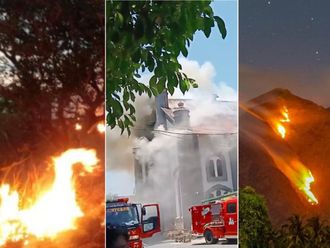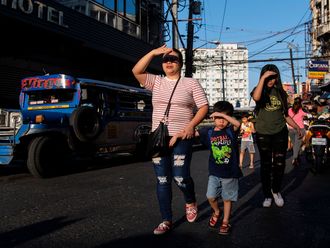Manila: Amid fears of a drought caused by the El Nino weather effect, regional authorities in the Philippines are contemplating asking the central government for urgent help.
In Zamboanga Sibugay in the Western Mindanao Region, Governor Wilter Palma said officials were mulling the possibility of placing 16 municipalities under a state of calamity due to lack of rainfall.
He was quoted by the state-run Philippine News Agency as saying that some 30,000 farmers have been affected by the absence of rainfall since last year.
To overcome the challenge, some of the farmers had started planting crops that are less dependent on rain water.
Similarly, the city council of Zamboanga City also declared a state of calamity for the same reason.
In February, Dr Vicente Malano of the Philippine Atmospheric, Geophysical and Astronomical Administration (Pagasa) had warned that the country is due to experience another El Nino-induced dry spell.
El Nino, which is Spanish for boy, refers to the unusually warm sea surface temperatures in the central and eastern equatorial Pacific.
“Pagasa’s recent climate monitoring and analyses indicate that the unusually warm sea surface temperatures in the central and eastern equatorial Pacific which started since November 2018 is expected to become a full-blown El Nino,” Malano said.
He added that, during the last three months, below normal rainfall conditions have been reported in Western Mindanao and Ilocos Norte in northern Philippines.
He added that the weak El Nino will likely continue until the second quarter of the year.
But as it unfolds, El Nino is also affecting other areas of the country.
In Central Philippines’ Negros Occidental, the absence of rainfall is seriously affecting the planting calendar for rise, the country’s staple.
In Koronadal City in Central Mindanao, authorities said some 1,000 hectares or rice and corn fields had been affected by the drought.
In normal times, farmers in the Philippines can squeeze in at least two crops for the year, especially for rice, as there are basically two seasons — wet and dry. However, during times of El Niño, farmers are forced to plant crops that more tolerant to heat and drier conditions.











